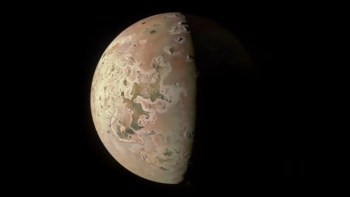
Synchrotron radiation has been used to solve a long-standing mystery surrounding the degradation of a yellow pigment widely used in late 19th and early 20th century paintings. An international team of scientists used cutting-edge spectroscopic techniques to locate multiple products of pigment decay within the paint, and concluded that degradation arose from photo-oxidation.
The development of the modern chemical industry played an important role in the palette of colours that were available to Impressionist and early Modernist painters such as Vincent van Gogh, Pablo Picasso and Henri Matisse. However, over the years, many of these synthetic inorganic pigments started to break down.
Ivory-coloured crusts
New yellow pigments played an especially important role in paintings of this era, says conservation scientist Francesca Casadio of Northwestern University/Art Institute of Chicago Center for Scientific Studies in the Arts. “It’s also the beginning of electricity,” she explains, “So they depict interior scenes where there’s electric light in all shades of yellow, and they depict things outdoors, where there’s all declination of light.” Unfortunately, cadmium yellow (cadmium sulphide) has proved to be one of the unstable pigments, with samples fading or even becoming obscured by a thick, ivory-coloured crust.
Previous analyses of degraded pigment had revealed various chemical species of oxidized cadmium, but determining their source, and thereby devising strategies to prevent their formation, was far from straightforward. They might be photo-dissociation products, for example, but they might also be contaminants in the original pigments or even the result of previous restoration or cleaning work.
Now, art conservation scientist Emeline Pouyet of the European Synchrotron Radiation Facility (ESRF) in Grenoble and colleagues in France, the Netherlands, Belgium and the US have used infrared and X-ray radiation from the ID21 beamline at ESRF to study two paintings that have suffered from degradation. They used an imaging technique called X-ray near edge spectroscopy (XANES) on carefully prepared thin sections taken from tiny altered and unaltered samples of paint from The Joy of Life and Flower Piece by Matisse. XANES is a type of absorption spectroscopy whereby X-rays are passed through small samples in order to excite electrons into many-body bound states.
Sub-micron resolution
The researchers then detected the electrons emitted from these states, which allowed them to identify which compounds are present in different regions of the painting. In addition to XANES, the team used X-ray fluorescence to look at thin cross-sections through the paint. Pouyet and colleagues also used infrared imaging to look for organic compounds. Together, the techniques allowed the team to identify the decay products and also pinpoint their locations to sub-micron resolution within the paint.
In some severely degraded regions of ivory crust, they found that cadmium sulphide was completely absent, but that calcium sulphates were present alongside calcium carbonate. Cadmium sulphide was still present, however, in the yellow paint underneath, alongside cadmium sulphate. From this the team concluded that the cadmium sulphate had been produced at the surface by photo-oxidation of the cadmium sulphide in the presence of humid air.
Chain reaction
Cadmium sulphate is colourless, so it could explain the fading observed in some samples. It is also highly soluble so, once formed, the compound could diffuse easily into the paint layer. At the surface, however, the sulphate ion could be displaced by carbon dioxide from the air, forming cadmium carbonate, which is white and could be causing the ivory crusts. The team also found cadmium oxalate at the surface, which is also colourless. Oxalate ions could have been produced either by acid hydrolysis of the oil binding the paints, or alternatively by varnish previously applied to the surface. Cadmium oxalate might also decompose into white cadmium carbonate: “At the moment we have two hypotheses for the formation of the carbonate,” explains Pouyet.
Casadio, who was not involved in the research (although she has been invited by Applied Physics A to guest-edit the special issue in which the paper describing the work will appear) describes the work as “remarkable”. “The application of 2D–XANES to works of art is extremely new,” she says, “It’s very hard to have beam time at synchrotrons for experiments of this kind, so it’s really quite amazing that it was possible to utilize such techniques on samples from paintings. These experiments can now pave the way for everybody else to detect, maybe with point analysis, some of these materials and then infer by analogy what’s going on with other paintings.” Museums and galleries already filter out ultraviolet light and humidity, she says, but the new work might help inform decisions about treating and reinforcing the paintings.
The research is published in Applied Physics A.



